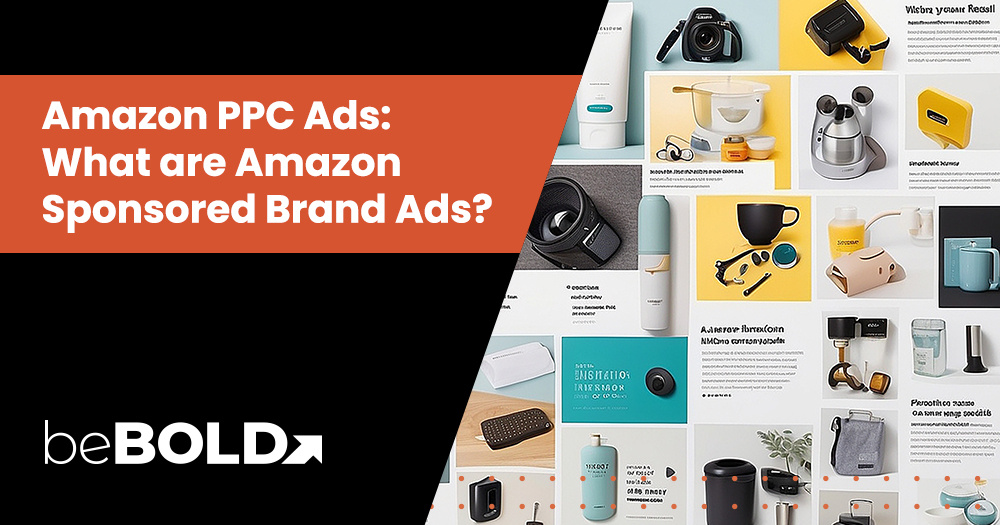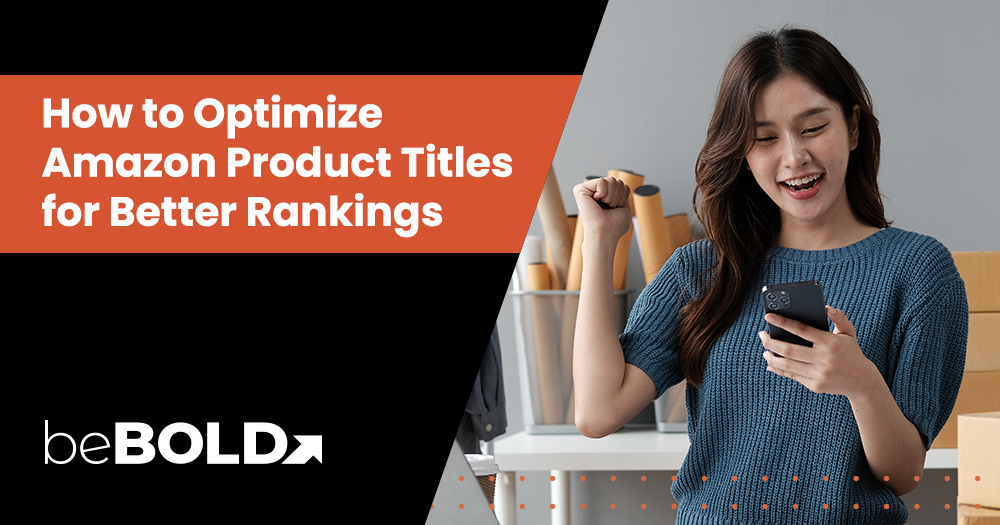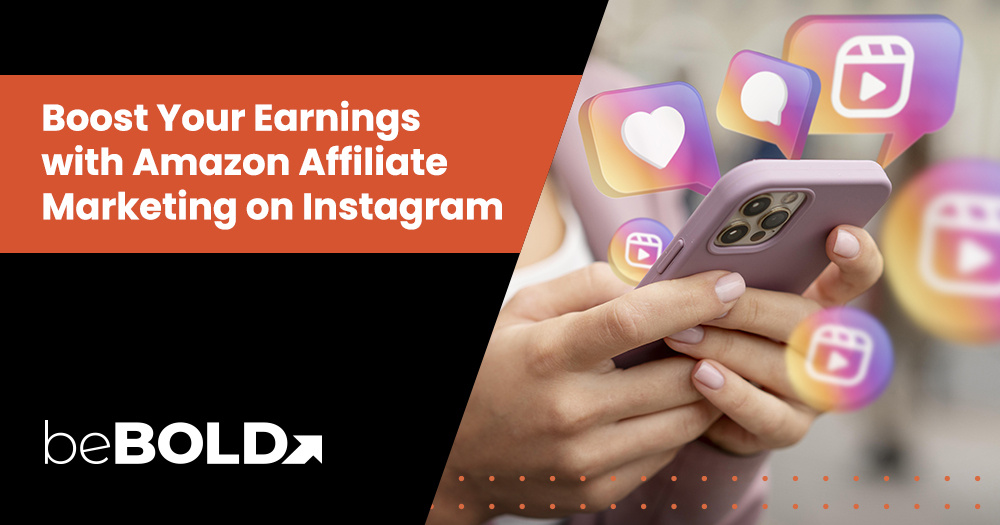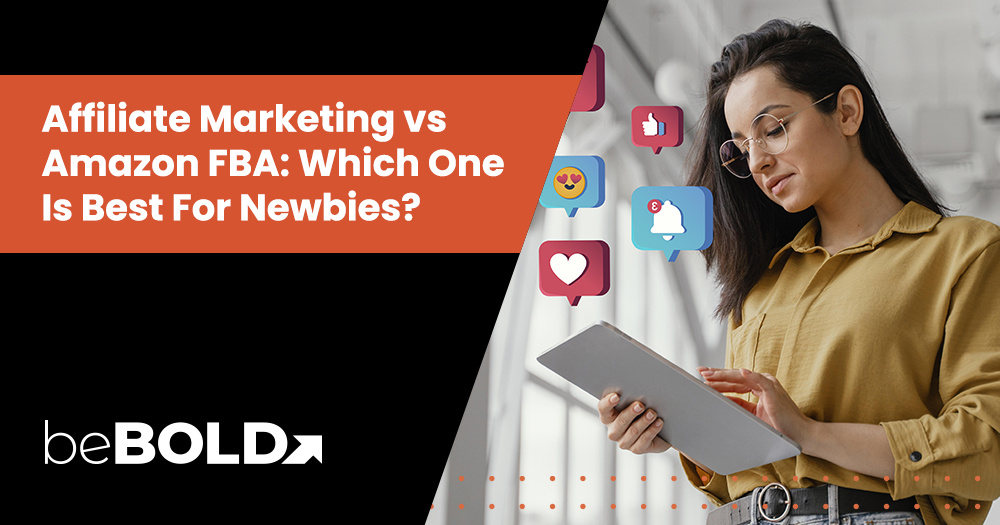What are Sponsored Brand Ads?
“Advertising is the art of making people notice something they didn’t know they needed.” This sentiment rings especially true on Amazon, the world’s largest eCommerce platform, where countless brands compete for attention. In a sea of products, how do you ensure your brand gets noticed? Solution- Amazon Sponsored Brand Ads—a game-changing tool for boosting visibility and building a strong presence in this hyper-competitive marketplace.
Whether you’re looking to introduce your brand to a broader audience, showcase your best-selling products, or create a seamless shopping experience, Sponsored Brand Ads offer the perfect solution with static and video brand creatives. With a unique mix of engaging formats, prominent placement, and precision targeting, these ads allow sellers to not only increase their visibility but also build trust and connection with customers. Let's explore what makes Sponsored Brand Ads a must-have strategy for Amazon sellers aiming for sustainable success.
What are Amazon Sponsored Brand Ads?

Amazon Sponsored Brand Ads (formerly known as Headline Search Ads) are a powerful pay-per-click (PPC) advertising solution offered by Amazon, designed to help sellers gain visibility and drive traffic to their brand’s storefront or specific products. These ads appear prominently within Amazon search results and provide an opportunity for brands to showcase multiple products or a branded experience.
For sellers, Sponsored Brand Ads offer a unique advantage by allowing them to advertise their brand’s name alongside a curated selection of sponsored product ads, creating an opportunity for higher customer engagement. These ads are typically placed at the top of the search results, increasing their visibility among potential buyers.
Key Benefits of Sponsored Brand Ads for Sellers:
- Increased brand visibility and awareness.
- Opportunity to target high-intent customers.
- Ability to showcase multiple products at once.
- Improved ad placement within search results for better exposure.
How Do Sponsored Brand Ads Work?
Sponsored Brand Ads work based on a bidding system where sellers compete for ad placement in Amazon’s search results. Ads are triggered when a customer enters a search term that matches the keywords associated with the campaign. The seller sets a budget and bids on relevant keywords, and Amazon uses its algorithm to determine the ad’s placement based on factors such as bid amount, ad quality, and relevance to the search term.
Once the ad is live, sellers can monitor its performance through Amazon's advertising reports, adjusting their bidding strategy, targeting, and keywords to optimize the ad’s success. Ads can be set up to direct customers to a specific product page, a customized storefront, or a collection of products, depending on the seller's objectives.
What Are the Sponsored Brand Ad Format Types?

Sponsored Brands ads come in three formats: Single Product, Multiple Products, and Storefronts. When selecting a format for your own sponsored brands video the products campaigns the sponsored brands campaigns, below, you should consider the goal of the campaign and the type of products or services you are promoting.
1. Product Collection Ads:

Product Collection enables businesses to showcase multiple products from their catalog in a single ad. These product collection ads can contain up to 50 eligible products and help increase brand awareness, visibility and sales by allowing shoppers to explore a variety of products from your brand and product collection at once.
Use Case: A beauty brand can feature a collection of skincare products, offering a complete skincare regimen in one ad.
2. Store Spotlight Ad Formats:

Store spotlight ads are designed to increase brand awareness by new potential customers and showcasing your brand's unique story and value proposition to customers shopping elsewhere. They feature a headline, brand logo, and customizable image with a link to your brand's store spotlight page on Amazon.
Use Case: A fashion brand might use a Store Spotlight Ad to drive traffic to their Amazon storefront, where customers can explore their full product range, new arrivals, and promotions.
3. Video Advertising Ads:

Video ads are a highly engaging way to tell your brand's story and your brand audience and showcase your products. These ads appear in search results sponsored product ads, and on relevant product detail pages within search results and landing pages and can be up to 45 seconds long.
Use Case: An electronics brand can use a video ad to demonstrate how their products work, highlighting unique features to encourage conversions.
Who Can Use Amazon PPC Sponsored Brands?
To be eligible for Amazon Sponsored Brand Ads, sellers must meet a few basic criteria:
The seller must be enrolled in the Amazon Brand Registry.
The seller must have a Professional Seller account.
- The products being advertised must comply with Amazon’s advertising policies.
Sellers of all sizes, from small businesses to large enterprises, can leverage Sponsored Brand Ads to increase their visibility and drive sales.
How to Set Up Sponsored Brand Ads?
Setting up a Sponsored Brand Ad on Amazon can be an effective way to increase visibility and drive traffic to your products. Sponsored Brand Ads allow you to showcase multiple products in a visually appealing way at the top of search results, helping you stand out from competitors.
Here’s a detailed guide to setting up a Sponsored Brand Ad on Amazon:
Step 1- Access Amazon Seller Central:

Log into your Amazon Seller Central account.
Step 2- Navigate to the Advertising Console

Under the “Advertising” tab, click on “Campaign Manager.”
Step 3- Create a New Campaign

Click on “Create Campaign” and select “Sponsored Brands.”
Step 4- Set Your Budget and Bidding

Decide on a daily budget and select your bid for each keyword.
Step 5- Select Your Products

Choose the products you want to advertise.
Step 6- Choose Your Keywords

Add keywords that are relevant to your products and target audience.
Step 7- Create Your Ad

Add your brand logo, and headline, and choose your ad format (Product Collection, Store Spotlight, or brands video).
Step 8- Launch the Campaign

Review your campaign and click “Submit for Review” to make it live.
What Amazon Products Are NOT Eligible for Sponsored Brands?
Not all products are eligible for Sponsored Brand Ads. Here’s a list of product exclusions:
- Refurbished Items: These cannot be promoted via Sponsored Brand Ads.
- Restricted Categories: Some product categories, such as alcohol or adult products, may be restricted from advertising.
- Non-Brand Registered Products: Only products from brands that are part of the Amazon Brand Registry are eligible for these ads.

Where Do Sponsored Brand Ads Appear on Amazon?

Sponsored Brand Ads on Amazon can appear in various prominent locations across the platform to maximize visibility and reach. These ads typically show up at the top of search results, making them one of the first things shoppers see when they search for relevant keywords.
Sponsored Brand Ads can also be displayed on product detail pages, allowing brands to showcase their products directly to potential customers who are already browsing similar items. Moreover, these ads may appear within search results as a headline banner, creating a strong visual impact and increasing brand recognition. By strategically placing Sponsored Brand Ads in high-traffic areas on Amazon, sellers can effectively target their desired audience and drive traffic to their products.
Amazon Advertising Reports for Sponsored Brands
Sellers can track the performance of their Sponsored Brand Ads through Amazon's advertising reports, which include important brand metrics. The sponsorship report has six different type of reports. The reports are usually good for sponsors who are aware that the reports can cover all types.
Reporting can also be requested via e-commerce central dashboard.
- Brand Summary Report - which provides insight into the performance of your Sponsored Brand Ads. This can be used to track impressions, clicks, and costs associated with each ad.
- Product Performance Report - which shows you how well individual products are performing in your ads. This can be useful for optimizing your ads by removing or replacing underperforming products.
- Bid Performance Report - which provides insight into how different bids affect ad performance. This can help you determine what the optimal bid amount should be for each of your campaigns.
- Campaign Summary Report - which shows an overview of your entire campaign including impressions, clicks, and costs.
- Keywords Performance Report - which provides insight into how well each of your targeted keywords are performing. This can help you determine if any of your keywords need to be adjusted or removed from your campaigns.
- Demographics Report - which gives you a breakdown of the shoppers who viewed your ads by age and gender. This can help you understand which demographic groups are most interested in your products, so you can target them more effectively.
By tracking these key metrics, you'll be able to optimize your ad campaigns, for better performance and get the most out of your Amazon Advertising budget
What Are the Benefits of Amazon Sponsored Brand Ads for Customers and Sellers?
Amazon Sponsored Brand Ads offer numerous benefits for both customers and sellers. For customers, these ads provide a more visible and engaging shopping experience by showcasing a brand's products at the top of Amazon shopping results and search results. This can help customers discover new products that align with their interests and needs. Sponsored Brand Ads also enhance brand recognition and credibility, as they are displayed prominently on Amazon's platform.
Here's a better understanding for how sponsored ads can be beneficial to both.
For Customers:
- Better Discovery of Relevant Products: Customers can discover brands and products they might not have found through organic search.
- Enhanced Product Awareness: Sponsored Brand Ads provide customers with more options to consider, increasing their awareness of new or complementary products.
- Curated Offers and Deals: Customers often see curated offers, like discounts or exclusive deals, within Sponsored Brand Ads.
- Streamlined Brand Navigation: Ads direct customers to brand stores or collections, making it easier for them to browse related products.
- Informed Purchasing Decisions: With detailed product information and brand storytelling, customers are empowered to make informed purchasing decisions.
For Sellers:
- Increased Visibility: Sponsored Brand Ads appear at the top of search results, ensuring your products and brand gain maximum visibility.
- Better Return on Ad Spend (ROAS): By reaching highly targeted customers, Sponsored Brand Ads typically result in a better ROAS compared to other ad formats.
- Access to Detailed Analytics: Sellers can track detailed metrics such as impressions, clicks, and conversions, helping them optimize their campaigns for better performance.
What’s the Difference Between Sponsored Products and Sponsored Brands on Amazon?
While both Sponsored Products and Sponsored Brands are part of Amazon's advertising ecosystem, they serve different purposes and offer distinct benefits.
Sponsored Products:
- Ad Type: Ads appear for individual products.
- Targeting: Keyword-based targeting, where individual products are promoted.
- Ad Placement: Typically appears within search results and on product detail pages.
Benefits of Sponsored Products:
- Great for individual product promotion.
- More granular control over product-specific targeting.
Sponsored Brands:
- Ad Type: Ads promote multiple products and showcase the brand’s name.
- Targeting: Ads target higher-level keywords related to the brand or product category.
- Ad Placement: Primarily appears at the top of Amazon search results.
Benefits of Sponsored Brands:
- Boosts brand awareness.
-
Ideal for driving customers to the brand store or product collection.
How to Track the Performance of Sponsored Brand Ads?
Tracking performance is key to maximizing the impact of your Sponsored Brand Ads. You can monitor metrics such as:
- Impressions: How often your ad is displayed?
- Clicks: The number of times customers click on your ad.
- Conversions: How many clicks result in a purchase?
- Cost per Click (CPC): The average cost for each click on your ad.
- ACoS (Advertising Cost of Sales): Measures ad spend efficiency by calculating the percentage of ad spend relative to sales revenue (Lower ACoS = Better Profitability).
- ROAS (Return on Ad Spend): Measures ad profitability by calculating revenue generated for every dollar spent on ads (Higher ROAS = Better Performance).
How to Utilize AI for Improved Ad Performance?
Amazon's AI-powered tools have revolutionized the way sellers manage their advertising campaigns on the platform. By utilizing advanced technologies such as automated bidding and campaign optimization, sellers can fine-tune their ad strategies to reach their target audience more effectively.
These AI tools delve deep into customer behavior, analyze bidding patterns, and examine keywords to enhance ad relevance, ultimately leading to increased return on investment (ROI) and decreased wastage of advertising spend.
One key benefit of Amazon's AI tools is their ability to adapt and optimize campaigns in real time based on performance data. This dynamic approach ensures that ads are continuously adjusted to maximize results and stay ahead of the competition.
Additionally, by implementing machine learning algorithms, these tools can identify trends and patterns that human analysis may overlook, providing sellers with valuable insights to refine their advertising tactics further.
What Are the Pros and Cons of Using Amazon Sponsored Brand Ads?
Overall, Amazon Sponsored Brand Ads can be an effective tool for increasing visibility and driving sales on the platform, but it's important to weigh the pros and cons carefully before incorporating them into your advertising strategy.
Pros:
- Increased visibility and brand recognition: Amazon Sponsored Brands allow your products to appear prominently in search results, increasing the likelihood of potential customers discovering your brand.
- Ability to showcase multiple products: With Sponsored Brands, you can feature multiple products in a single ad, providing customers with a variety of options from your brand.
- Enhanced targeting for specific customer segments: These ads enable precise targeting based on keywords, interests, and behaviors, ensuring that your message reaches the right audience.
- Flexible budget control and reporting for optimization: Sponsored Brands offer flexibility in budget allocation and provide detailed insights through analytics, allowing you to optimize campaigns for better performance.
Cons:
- Can be costly for competitive categories: Bidding on popular keywords in competitive markets can drive up costs and require a significant investment to achieve desired results.
- Requires continuous optimization and testing: To maintain effectiveness, ongoing monitoring and adjustments are necessary to keep campaigns performing well.
Limited to sellers enrolled in Brand Registry: Participation in Amazon's Brand Registry program is a prerequisite for running Sponsored brand ads, which may restrict access for some sellers.
Are Sponsored Brand Ads Worth It?
Sponsored Brand Ads have proven to deliver a significant return on investment (ROI) when executed strategically. According to Amazon, advertisers who leverage Sponsored Brand Ads often see a measurable lift in brand visibility and sales. These ads excel at targeting high-intent customers, with studies showing that Sponsored Brand Ads can increase click-through rates by up to 25% compared to standard campaigns. This targeted visibility not only attracts new buyers but also fosters brand growth through increased recognition and credibility.
By analyzing key performance indicators such as click-through rates (CTR), conversion rates, and return on ad spend (RoAS), sellers can identify opportunities for optimization. For example, a data-driven campaign that includes A/B testing of ad copy and visuals often results in improved engagement and reduced cost-per-click over time.
To maximize ROI and leverage Sponsored Brand Ads effectively:
- Utilize relevant keywords: Employ data-backed keyword research to ensure ads reach the right audience.
- Create compelling ad copy: Highlight unique selling points to communicate value clearly and differentiate from competitors.
- Design visually striking creatives: Eye-catching visuals boost engagement and draw attention immediately.
- Monitor and analyze metrics: Continuously track performance metrics like CTR, RoAS, and impressions to identify areas for improvement.
- Refine strategies continuously: Leverage campaign analytics and customer feedback to optimize targeting, messaging, and overall performance.
Best Practices for Maximizing Campaign Performance
Optimizing your Amazon Sponsored Brand Ads involves more than just setting up campaigns—it requires a strategic approach, continuous monitoring, and data-driven refinements. Here are the best practices to ensure your campaigns deliver exceptional results:
1. Optimize Your Targeting Strategy
Identify and prioritize high-intent keywords relevant to your products, including product targeting options. Use tools like Amazon’s keyword suggestions or third-party research tools to refine your targeting. Segmentation is key—group keywords by themes or product relevance to ensure precision in your targeting and maximize your ad's effectiveness.
2. Refine Ad Creatives
Your ads should stand out visually and communicate a clear message. High-quality product images, an engaging headline, and your brand’s logo help create a professional, trustworthy appearance. Test different exact-match messages that highlight key benefits, promotions, or unique selling points to capture attention and drive clicks.
4. Leverage Product and Store Spotlights
Showcase collections of complementary products or direct traffic to your Amazon store for a more immersive brand experience. Highlight seasonal bundles, bestsellers, or new arrivals to guide customers toward making multiple purchases. A well-organized storefront can increase conversions and enhance brand loyalty.
5. Monitor and Adjust Bidding Strategies
Keep a close eye on performance metrics like CTR, CPC, and ROAS. Adjust your bids based on keyword performance, increasing bids for high-performing terms and reducing or pausing bids for underperformers. Create an ad group to enhance Amazon’s automated bidding options, which can also help you stay competitive while maintaining cost-efficiency.
6. A/B Test Creatives and Targeting
Experimentation is crucial to optimization. Create multiple ad variations, testing different headlines, images, keywords, or targeting approaches. Analyze the results to identify what resonates best with your audience and refine your campaigns accordingly.
7. Leverage Negative Keywords
Negative keywords are essential for eliminating irrelevant traffic and reducing wasted ad spend. Analyze search term reports to identify keywords that attract clicks but fail to convert, and add them to your negative keyword list to improve campaign efficiency.
8. Align Ads with Seasonal Trends
Capitalize on seasonal shopping patterns and events by aligning your ad campaigns with relevant themes. Whether it’s back-to-school season, holiday sales, or summer promotions, create ad content and collections that resonate with the current trends and boost conversions.
9. Leverage Amazon Brand Analytics
Use Amazon Brand Analytics to gain insights into customer behavior, keyword trends, and product performance. These insights help you refine your campaigns, understand your audience better, and make data-driven decisions to enhance your ROI.
How Sponsored Brand Ads Build Trust
Building trust is of high priority in today’s competition, and Amazon Sponsored Brand Ads play an important role in establishing that connection. When aligned with broader digital marketing strategies, Sponsored Brand Ads amplify your brand’s reach and credibility.
With tools like Amazon Brand Analytics, beBOLD Digital ensures that campaigns remain data-driven and customer-focused, helping your business build lasting relationships and a trustworthy reputation in the marketplace. They integrate with efforts such as content marketing, SEO, and social media by driving traffic to your Amazon storefront and creating touchpoints that reinforce your brand’s value proposition.

Conclusion
Success on Amazon isn’t just about having great products—it’s about building a memorable brand that resonates with your target audience. Amazon Sponsored Brand Ads offer an incredible opportunity to connect with Amazon shoppers and customers at every stage of their journey, from discovery to purchase.
The key lies in consistency and innovation. Use Sponsored Brand Ads not just as a promotional tool, but as part of a broader strategy to tell your story, engage your audience, and leave a lasting impression. As eCommerce evolves, so too should your approach—embrace the possibilities, experiment with creative formats, and continually refine your campaigns in accordance with creative guidelines to stay ahead in this dynamic marketplace. Your brand’s potential on Amazon is as limitless as your willingness to innovate.
Frequently Asked Questions
How much should I spend on Sponsored Brands?
Your budget should align with your overall marketing goals, category competitiveness, and average CPC. Start with a modest budget and adjust based on performance insights.
Can you remove sponsored ads from Amazon?
Customers cannot remove sponsored ads, but sellers can pause or discontinue their campaigns through the Amazon Advertising Console.
How do I choose keywords for my Sponsored Brand Ads?
Focus on relevant, high-intent keywords derived from Amazon Brand Analytics and keyword research tools. Test and refine to identify the most effective terms.
How do I optimize my Sponsored Brand Ads for seasonal sales?
Highlight seasonal products, adjust budgets for high-demand periods, and use holiday or trend-specific keywords to capture seasonal interest.
What are the typical conversion rates for Sponsored Brand Ads?
Conversion rates vary by category, targeting, and ad quality, but on average, they range between 10% and 15%. Regular optimization can improve these rates.
How do Sponsored Brand Ads perform compared to Sponsored Products?
Sponsored Brand Ads are better for brand visibility and multi-product promotion, while Sponsored Products focus on individual product sales with granular targeting. Both can complement each other when used strategically.
Can small businesses benefit from Sponsored Brand Ads?
Yes, small businesses can leverage these ads to enhance visibility, build brand identity, and compete effectively in niche markets.
Ready to maximize your Amazon presence? Let beBOLD Digital help you create impactful Sponsored Brand Ads that elevate your brand and drive results. Schedule a Call with us Today!







Comments